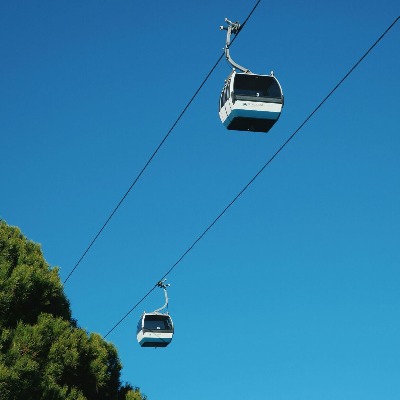Austrian Tourism - 'A Total Failure Of The Winter Season'

The results of WIFO's tourism analysis for the first four months of winter 2020/21 (November 2020 to February 2021) show a total failure (arrivals –95.1%, overnight stays and income - nominal and real - each –93.5%). For the entire winter season, losses of over 90% are expected. The outlook for the rest of 2021 remains gloomy at –49% compared to the pre-crisis level in 2019.
If the lockdown1) imposed at the beginning of November 2020 was lifted for retailers and schools in the second week of February 2021, hotels and restaurants were largely closed. The use of accommodation is reserved exclusively for business travelers and spa guests.
In absolute terms, only around 0.7 million arrivals and around 3.5 million overnight stays were counted in domestic accommodation establishments from November 2020 to February 2021, the turnover in total travel (including day trips and expenses in the course of visiting relatives and acquaintances) amounted to According to initial estimates by WIFO, at a nominal amount of € 0.76 billion (without taking into account payments from the public sector as part of the COVID-19 aid measures). If one takes into account the calendar effect due to the leap day in February for a correct comparison with the previous year - in 2020 the month had 29 days, 2021 only 28 days - the drop in demand over the entire analysis period was unchanged at 95.1% for arrivals, 93.4% for overnight stays and Income 93.3% (nominal) and 93.4% (real) 2).
At the regional level, the actual values were not adjusted for the leap day effect - the values described below for the current analysis period are therefore slightly overestimated. With regard to tourism income, it should also be noted that in the course of winter 2020/21 not only have the expenses of overnight guests been missing, but also day tourism has plummeted as a result of the lockdowns and the cancellation of events. However, no statistical information is available on this, so that the same dynamics as overnight tourism were assumed for day tourism in order to estimate total travel sales.
Overall, from November 2020 to February 2021 in Vienna (–94.4%) and western Austria (Salzburg, Tyrol, Vorarlberg; average –97.4%), demand came to a virtually complete standstill (overnight stays and nominal sales equally) during in Lower Austria at least around 37% of the quantitative and monetary level of 2019/20 was reached. Although there is a ban on entering the accommodations for holiday purposes, significant sales were achieved in Lower Austria through the continued operation of health resorts, the accommodation of workers (especially in the construction industry) and sporting events. In Upper Austria and Burgenland, too, despite the lockdown, at least around a quarter or a good fifth of the already sharply reduced level of overnight stays and sales of the previous year was achieved.
In a normal winter, February is the most important winter month with around a quarter of the number of seasonal nights. In the 2019/20 season, which is already affected by COVID-19, its weight increased to around a third in March and April 2020 due to the lockdown-related loss of demand in March and April 2020 ( on an unadjusted basis including leap day and Easter effects). The current season has so far been characterized almost continuously by closed accommodation establishments; based on the current state of knowledge, a reopening is not expected before mid-May. Overnight guests on holiday are therefore likely to be the exception in winter 2020/21; rather, the overall very low demand is limited to business travelers and spa guests. With only around 184,900 arrivals and 912,800 overnight stays, the result in February 2021 was 96.0% or 95,
According to a current estimate by WIFO, in which the opening of accommodation providers and the lifting of travel restrictions against Austria on important source markets is only assumed after the end of the current winter season, February should only account for around 17½% of winter nights in 2020/21 this year . For the entire period from November 2020 to April 2021, only around 4.9 million overnight stays are expected, which is less than a tenth of the volume for the 2019/20 season (-92%; including leap day and Easter effects). The winter sports-oriented federal states of western Austria and the city destination of Vienna are therefore likely to have lost almost all of the seasonal demand compared to the previous year (overnight stays: average -97% and -91½%),
A total failure of the international demand for overnight stays is to be expected nationwide from November 2020 to April 2021 (-97% compared to winter 2019/20), only in Lower and Upper Austria the minus should be lower (average -74%). The significant increase in the importance of domestic tourism in 2020/21 (market share around 71%, normal season 2018/19 22.7%) is likely to have lost an estimated 73% of the overnight stay volume of 2019/20 throughout Austria over the entire winter half-year (Western Austria -85%, Vienna and Mixed regions (Burgenland, Carinthia, Styria) each -75%, Lower and Upper Austria average -52%).
Outlook for the calendar year 2021
Assuming that the tourist entry ban for accommodation providers will be lifted in the second half of May and the travel warning for the most important foreign markets will be lifted in mid-June, WIFO expects overnight stays of around 20% for the calendar year 2021 compared to 2020. Compared to the previous high in 2019, the last year without any adverse effects from the COVID-19 pandemic, this means a decrease of 49%. As in the previous year, the recovery from early summer should initially come from domestic tourism in 2021: With an overnight share of around 36½% in 2021, holidays in Germany should continue to gain in relevance (2020: 32.3%, 2019: 26.2%): The loss of demand in this segment should therefore be significantly weaker than in the case of international visitors to Austria compared to 2020 (–10% to –25%); Compared to 2019, the expected drop in overnight stays for domestic travelers is around 29%, but for foreign guests it is around 56%.
At the regional level, Vienna can expect the relatively highest losses in 2021, as it did in the previous year; The greater dependency on long-distance markets, which are unlikely to have any impact on demand in the current year, the cancellation of conferences and other events, and the likely lasting reduction in business travel will affect city destinations particularly heavily. At the same time, domestic tourism plays a very minor role.
The expectations for tourism in rural regions, which already developed favorably last summer, are more positive. Nevertheless, the failure of the 2020/21 winter season and the delayed start of the 2021 summer season will lead to significant losses for the entire year 2021: Salzburg, Tyrol and Vorarlberg should not even reach half the annual volume in 2019 (-55%) on average, while the gap could be around a third in each of the other regions; the latter benefit from the significantly stronger weighting of inland tourism.
However, this assessment assumes that by the beginning of the main summer season it will have been possible to contain the infection rate sustainably through vaccinations and that there will be no further significant flare-up of the pandemic in autumn 2021. It is therefore assumed that it will be possible by summer at the latest to live with the SARS-CoV-2 virus or to go on vacation under pandemic conditions. One year after the outbreak of the COVID-19 pandemic in Europe, interest in traveling again is likely to be very high - this is indicated by the very positive booking situation for the summer and the already incoming numerous inquiries from guests at Austrian accommodation providers.
1) Second lockdown: partial lockdown with exit restrictions from 8 p.m. to 6 a.m. from November 3 to 16, 2020, full lockdown from November 17 to December 23, 2020; Third lockdown: December 26, 2020 to February 7, 2021 (schools, retail) or probably until April 25, 2021 (accommodation, catering).
2) For the determination of calendar effects, such as B. the consideration of a leap year or the position of the Easter week, the program JDemetra + was used. Monthly data from January 1996 was used as a database; the adjustment was made for arrivals, overnight stays and sales in total travel (in each case for Austria as a whole).













